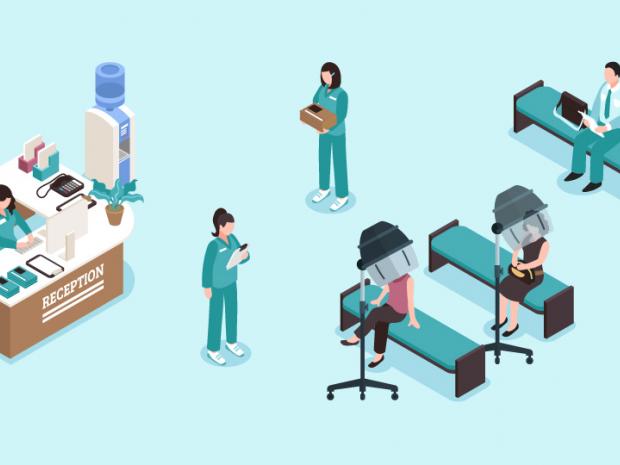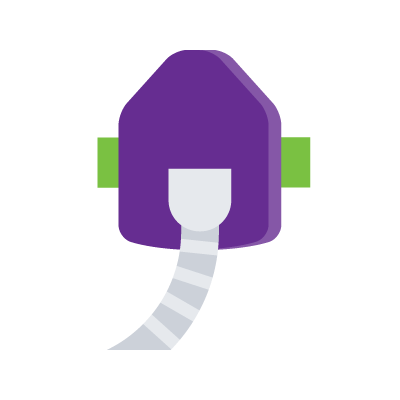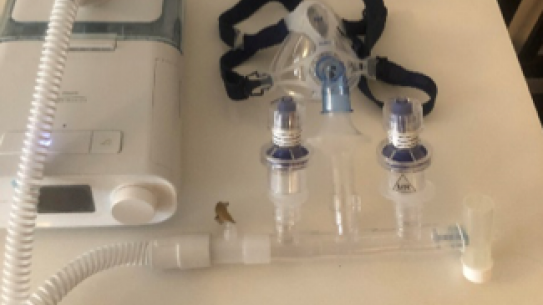NYU Tandon AirMOD and AirVENT
The race to save lives and reduce infection amid COVID-19

The strain on U.S. healthcare systems as a result of COVID-19 has been a constant topic of government and media discussion. We face a critical window in the coming weeks and months as hospitalizations increase, and before new treatments and equipment can be deployed at scale.
In response, the task force at NYU Tandon has pivoted to work more like a rapid-response tech start-up than a university research lab. A geographically-dispersed volunteer team using remote collaboration tools has channeled diverse expertise into innovative, life-saving solutions that can get to the health care front lines as quickly and safely as humanly possible.
Three key criteria serve as the team’s northstar for speed and safety:
- Use equipment readily available in healthcare environments and off-the-shelf components that enable manufacturing at scale
- Create solutions that can be quickly constructed and deployed with minimal training
- Get upfront input and construction validation from medical professionals and others well-versed in ventilator operation and clinical environments
The Solution
The NYU Tandon team, in collaboration with the NYU COVID-19 task force, set out to find Apollo-13-style solutions to the two biggest challenges facing healthcare providers:
- COVID-19 patients frequently need oxygen and air support — currently being provided using ventilators with an invasive intubation process that can put healthcare professionals at risk of infection. These patients also often require longer times on ventilators vs. other conditions, leading to a looming ventilator shortage.
- The contagious nature of COVID-19 creates a containment problem — sick patients are an infection risk as they wait to be triaged in waiting rooms, and as they’re transported to other areas to receive care. Hospitals don’t have enough negative pressure environments to address those risks with the increasing volume of COVID-19 patients.
The team has created an innovative suite of modified, readily available parts to assist with oxygen delivery and reduce infection: the NYU Tandon AirMOD + AirVENT. The AirMOD and AirVENT can be used together or independently as needed.
NYU Tandon AirMOD
A two-minute solution for modified oxygen delivery
 Many hospitals have CPAP/BiPAP machines readily-available and already being used in negative pressure environments to treat sleep apnea and other conditions. These machines can be used in tandem with ventilators to reduce the time patients require ventilator support and free up ventilators for others. The guidance suggests use:
Many hospitals have CPAP/BiPAP machines readily-available and already being used in negative pressure environments to treat sleep apnea and other conditions. These machines can be used in tandem with ventilators to reduce the time patients require ventilator support and free up ventilators for others. The guidance suggests use:
- Early on when they require breathing assistance but before they need a mechanical ventilator.
- In later stages when they need to be weaned off the ventilator.
Since CPAP/BiPAP are non-invasive breathing support machines that entail a non-closed-loop fluid circuit that can emit aerosolized virus and contaminate the environment, we have modified the CPAP/BiPAP fluid circuits to create the NYU Tandon AirMOD. Our modified circuits take two minutes and use off-the-shelf components in novel arrangements to render a closed-loop circuit that prevents contamination and further infection of others. With these modifications, patients can be treated with CPAP/BiPAP machines in a non-invasive procedure without endangering the wellbeing of healthcare workers or other patients.
NYU Tandon AirVENT
A salon hair dryer transformed into a personal negative pressure hood
 COVID-19 is most commonly spread when a person coughs or sneezes, and the rapid flow of air sends small water droplets filled with viral pathogens from the lining of the lungs into the air. This also occurs when providing positive pressure breathing support with CPAP and BiPAP machines, and when performing intubation with a ventilator. A personal negative pressure hood can contain the airborne virus and ensure healthcare workers can safely provide care.
COVID-19 is most commonly spread when a person coughs or sneezes, and the rapid flow of air sends small water droplets filled with viral pathogens from the lining of the lungs into the air. This also occurs when providing positive pressure breathing support with CPAP and BiPAP machines, and when performing intubation with a ventilator. A personal negative pressure hood can contain the airborne virus and ensure healthcare workers can safely provide care.
To avoid the need to develop a new supply chain, the task force developed the NYU Tandon AirVENT, a personal negative pressure hood from a modified and easily portable salon hair dryer. The task force worked directly with a manufacturer to reverse the direction of the blower and install a disposable HEPA filter that leads air to be pulled through the hood and away from the patient and surrounding environment.
Full Plans

Get Full Plans
NYU Tandon Task Force
What’s Next
We are 3D scaling the components in anticipation of a shortage of parts and will make them available so anyone can make any of the parts.
For information about receiving an NYU Tandon AirMOD or NYU Tandon AirVENT for testing, email Steven Kuyan (kuyan@nyu.edu).
For further information or to get involved with the NYU COVID-19 Task Force, email covid19.taskforce@nyu.edu.

